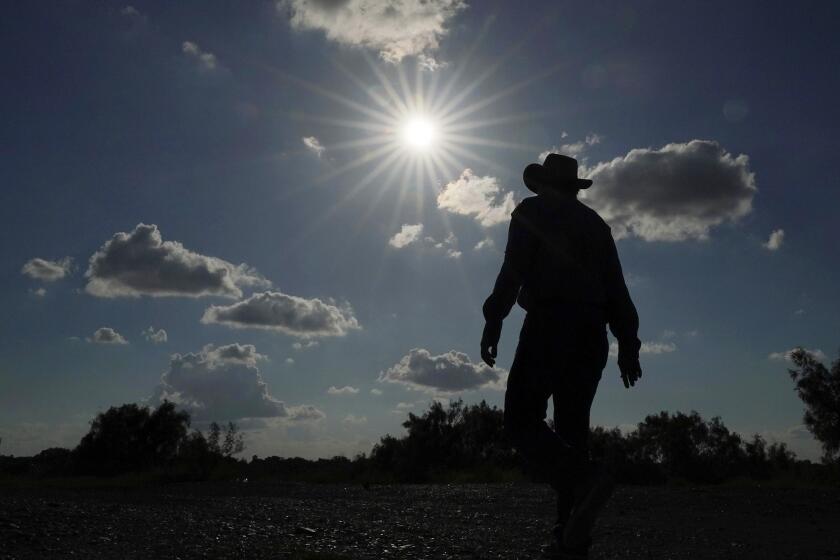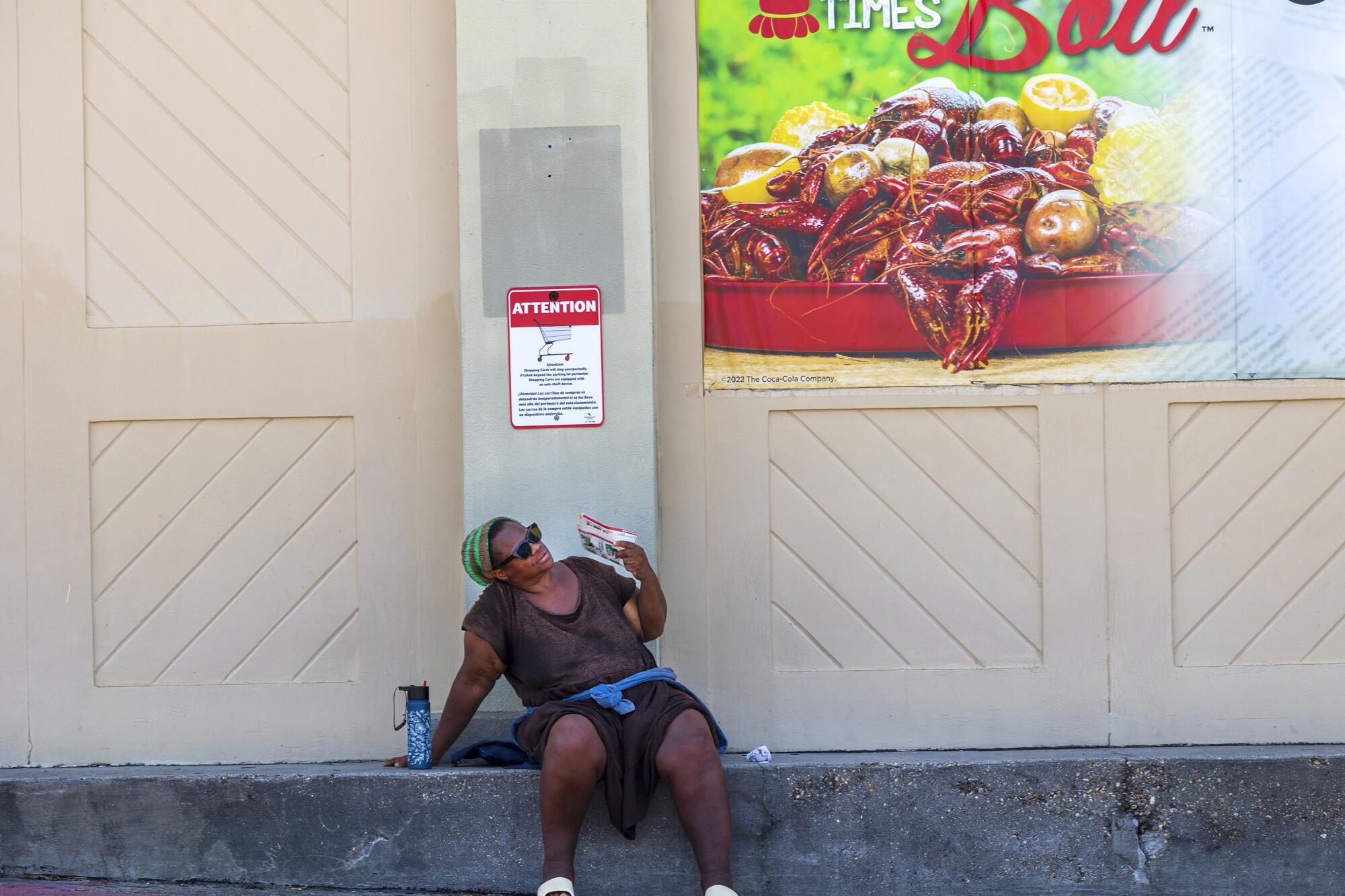
- Share via
ATLANTA — Wildfire smoke engulfed the iconic skyline of New York, blotting out the Empire State Building in a dystopian orange haze. A massive heat dome broke temperature records in Texas, straining the power grid and killing 13 people. Torrential rain flooded the Hudson Valley and Vermont, washing homes off their foundations and forcing residents to navigate downtown streets by canoe.
This summer, the United States resembles the set of a blockbuster disaster movie.
As extreme weather engulfs almost every part of the nation — from intense precipitation in the Northeast to a sharp increase in temperatures on land and in the ocean in the Southeast and Southwest — even scientists who track climate change are startled.
“I’d say this is unbelievable, but that word has been losing its meaning lately,” said Brian McNoldy, a senior research scientist at the University of Miami, as the city’s heat index hit 109.9 on Monday — Miami’s 30th consecutive day of triple-digit temperatures.
With about 100 million Americans from California to Florida under heat advisories or extreme heat warnings this week, many are sheltering indoors.
Anyone hoping the ocean would be an escape from the heat found little relief: Sea temperatures off the Florida Keys came close to 97 degrees, not much cooler than a hot tub.
Though heat waves are “typical summer stuff” in states like Florida, Benjamin Kirtman, a professor of atmospheric sciences at the University of Miami and co-chair of the National Oceanic and Atmospheric Administration Climate Prediction Task Force, said he was most shocked by the rapidly warming seas. Surface sea water across a broad swath of the Florida Keys — and parts of the Gulf of Mexico — is about 5 degrees warmer than normal for this time of year.
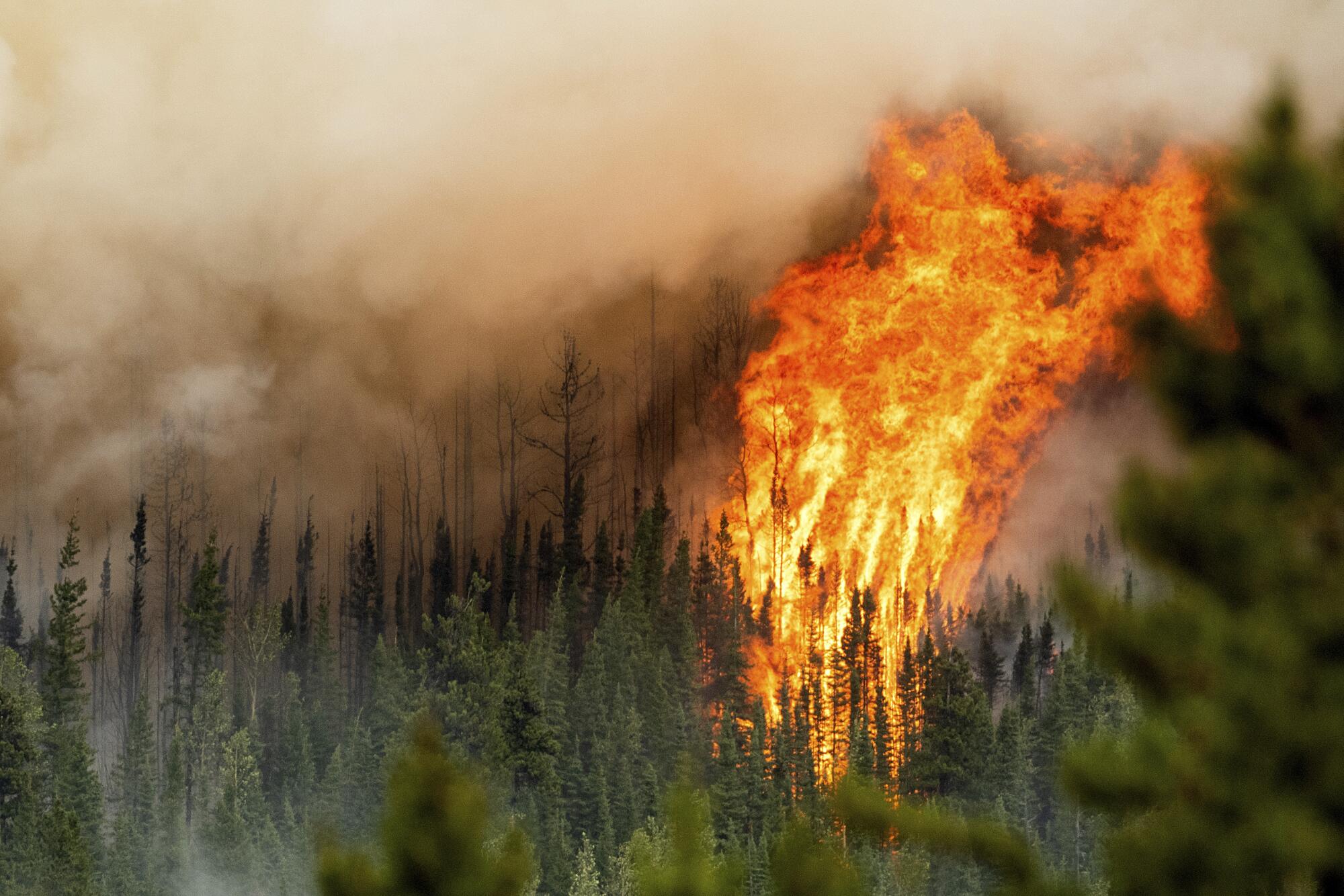
“The temperatures that we’re seeing in the global oceans have a one in a quarter-million chance of happening,” Kirtman said. “The magnitude of this ratcheting up is just mind-boggling to me. It’s completely out of bounds.”
The warmer seawaters threaten to bleach coral reefs — a vital habitat for fish, shrimp, crab sponges, oysters, clams, crabs and sea urchins — and encourage the forming of harmful algal blooms. They also create more energy to fuel hurricanes.
2023 is an El Niño year, which typically means weaker hurricanes in the Atlantic Basin. But experts warn that the El Niño effect could be offset by warming seas.
Last week, Colorado State University climatologists cited “record warm sea surface temperatures” as a factor in their prediction of an above-average hurricane year, with four major hurricanes of Category 3 or greater intensity.
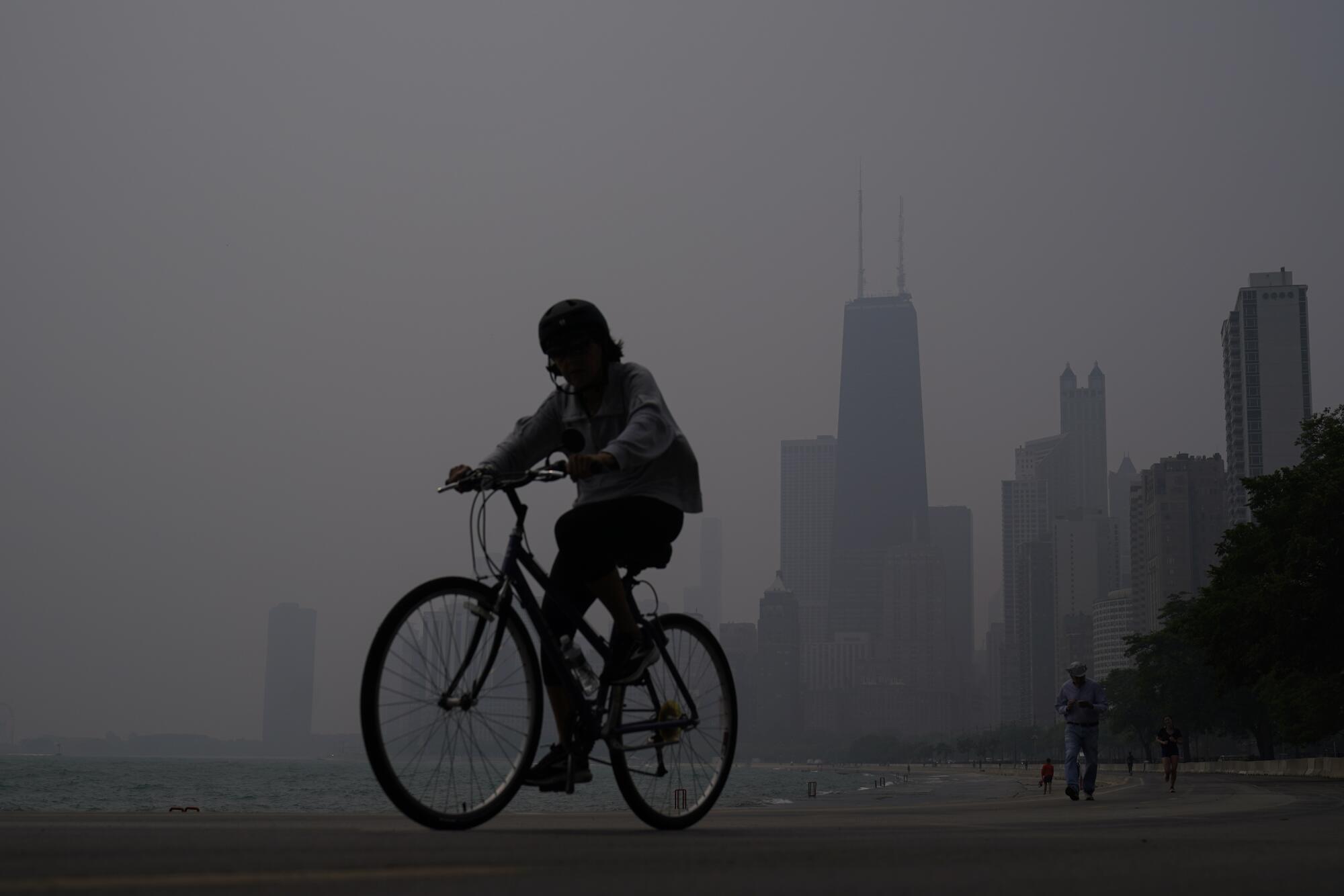
The nation’s extraordinary weather comes as Earth saw its hottest week on record last week. The World Meteorological Organization said preliminary data showed the average global temperature last Friday was 63.05 degrees. The previous record was 62.49 degrees on Aug. 16, 2016.
“We are in uncharted territory, and we can expect more records to fall,” warned Chris Hewitt, the group’s director of climate services.
In Southern California, the heat wave has contributed to several wildfires this week. Wildfires also spread in Oregon and Washington, prompting evacuation orders and fears of an above-normal 2023 wildfire season in the Pacific Northwest.

In the Northeast, the unusually intense rain comes a month after thick smoke from Canadian wildfires billowed across the Midwest, Northeast and Mid-Atlantic. In New York, the smoke forced the cancellation of “Hamilton” on Broadway and postponed a Yankees vs. White Sox game. It seeped into Manhattan high-rises and Queens row houses, posing a particular hazard for residents with health issues such as asthma, according to a map of indoor air quality compiled with data from citizen scientists.
On Tuesday, plumes of smoke from the Canadian fires returned.
After 9 inches of rain fell within the Hudson Valley in a 24-hour period this week, flooding homes and sweeping a 35-year-old woman to her death, New York’s Democratic Gov. Kathy Hochul declared the intense weather afflicting her state “the new normal.”
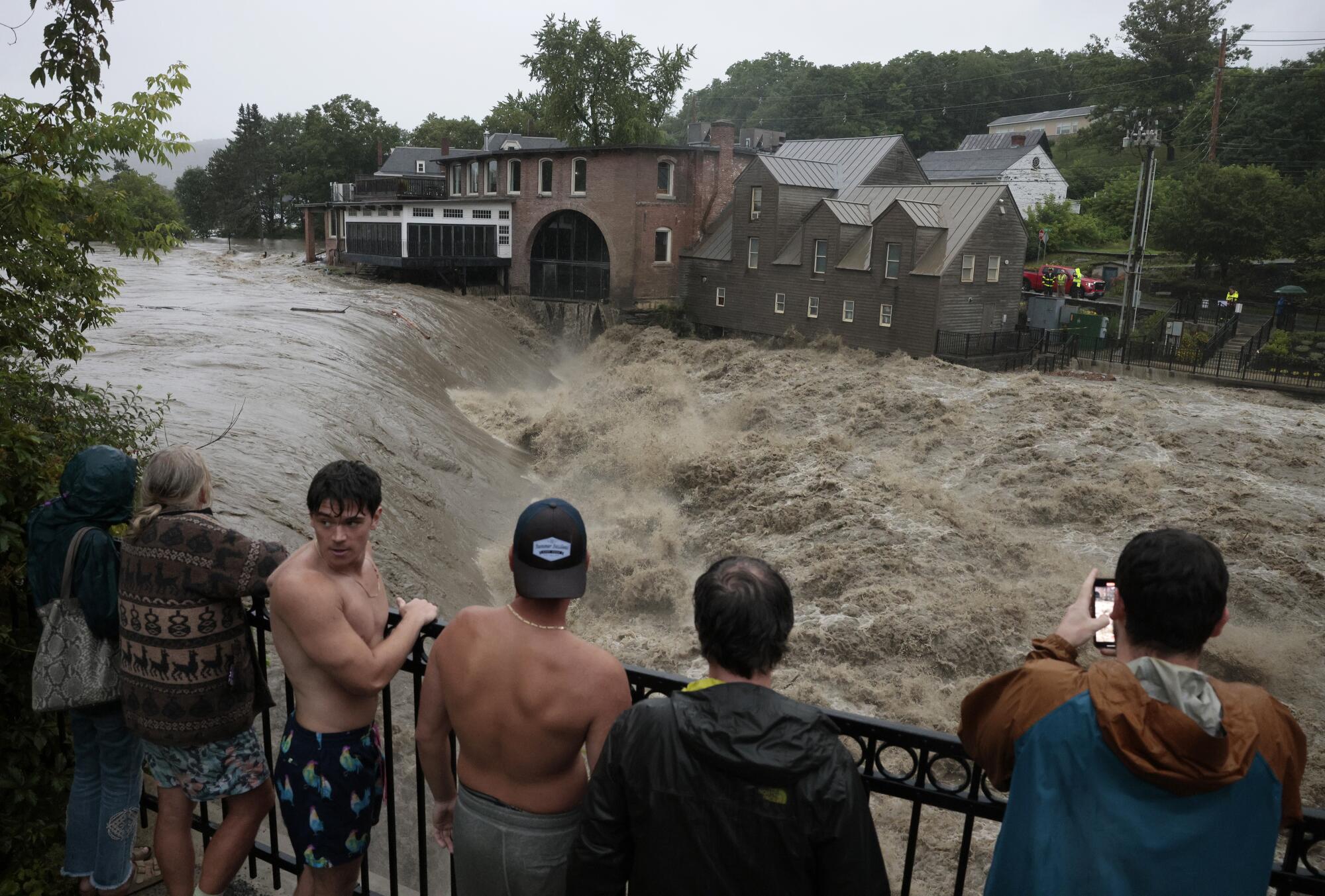
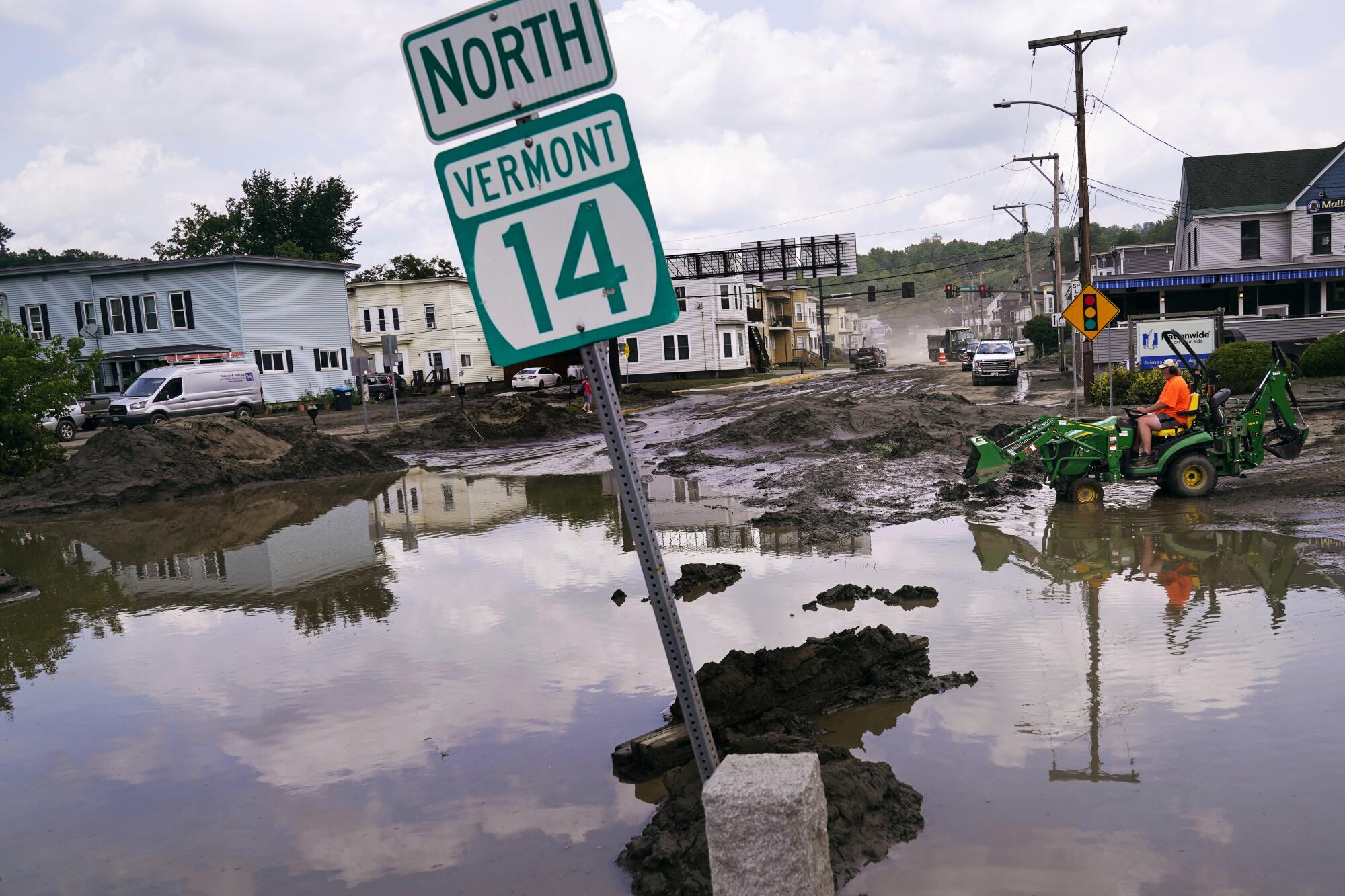
But Michael Mann, a professor in the Department of Earth and Environmental Science at the University of Pennsylvania, rejects that term, saying: “‘New normal’ makes it sound like we’ve arrived at some other climate state and just need to adapt to it. But it’s worse than that. It’s an ever-moving baseline of more frequent and intense weather extremes as we continue to warm the planet.”
“I prefer to call it ‘a new abnormal,’” he told The Times in an email.
The acute warm temperatures, Mann said, stemmed from a combination of steady, ongoing human-caused climate change and natural variability.
Record heat. Raging fires. What are the solutions?
Get Boiling Point, our newsletter about climate change, the environment and building a more sustainable California.
You may occasionally receive promotional content from the Los Angeles Times.
“We’re seeing the steady warming of the planet from fossil fuel burning and carbon pollution combined with a natural transition of the climate from a La Niña to El Niño state,” he said. “The latter adds as much as 0.3C [0.54 degrees Fahrenheit] or so extra warming ... we can think of it as a bit of natural ‘fuel’ that is being added to the human-caused fire.”
Though heat waves broke single-day temperature records last week in cities from Miami to Portland, Ore., most places have yet to break all-time records this summer. The hottest place on Earth, Furnace Creek in California’s Death Valley, is forecast to reach 127 degrees on Sunday, short of the 134 degrees recorded in 1913.

Phoenix reached 111 degrees on Tuesday, slightly higher than normal but short of the record for that day of 118 in 1958. The National Weather Service in Phoenix said temperatures in the city, which has endured nearly two weeks of 110-degree weather, are expected to soar as high as 118 degrees through the weekend. If the high temperatures persist for another week, they will break the all-time record.
With Earth breaking average heat records, L.A. and other cities face a test of their readiness plans for temperatures that can kill.
Local officials across the U.S. are scrambling to prepare for hotter weather, issuing warnings. opening cooling centers and hydration stations, and checking on vulnerable residents who are unsheltered, living in mobile or manufactured homes, or have no air conditioning. Some cities are also developing longer-term mitigation strategies.
In 2021, Phoenix became the first city to set up an Office of Heat Response and Mitigation, establishing a strategic plan to combat the growing risk that high temperatures pose to the city’s economy and its residents’ health. The city is working to plant trees to create more shade in disadvantaged communities, and to install heat-reflective pavement.
Still, Maricopa County reported 425 heat-associated deaths last year, a 25% increase from the previous year.
If living in the United States sometimes feels unstable and apocalyptic — as though Americans are auditioning for “The Day After Tomorrow” — many scientists stress that the ending is not predetermined.

“Humans have some ability to affect future trajectories of warming,” said Tom Knutson, a senior scientist at NOAA’s Geophysical Fluid Dynamics Laboratory. “We still have some ability to affect what level temperatures would get to, for example, by reducing our greenhouse gas emissions. So part of the answer there actually lies with us, and what we do.”
The campaign — part of Newsom’s $404-million Extreme Heat Action plan — will partner with 121 community-based organizations to conduct outreach in every county.
Kirtman, of NOAA’s Climate Prediction Task Force, said that even if temperatures rise, Americans can put in place mechanisms to make the nation more livable and reduce the risk to human health.
“There’s no reason why we should lose a few thousand in Chicago because they’re stuck in an apartment building and have no air conditioning,” he said.
Governments can also work on adaptive measures to increase resilience in the face of more intense weather events, Mann said, by restricting construction in flood- and fire-prone regions, building coastal defenses against flooding, and developing cooling infrastructure to help people cope with extreme heat.
“Earth’s climate system is both fragile and resilient at the same time, and we can likely prevent truly catastrophic warming if we decarbonize the machinery of our civilization,” he said. “On the other hand, if we fail to do so, climate history teaches us that collapse is not out of the question.”

More to Read
Sign up for Essential California
The most important California stories and recommendations in your inbox every morning.
You may occasionally receive promotional content from the Los Angeles Times.

